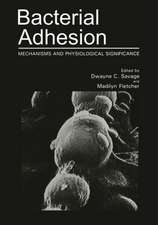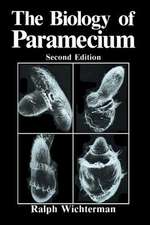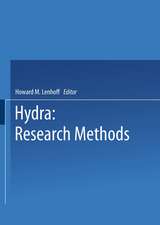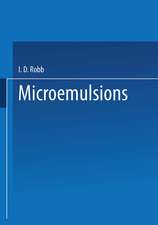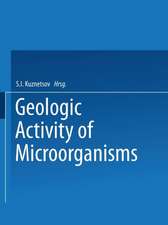The Bacteriophages: Volume 1: The Viruses
Editat de Richard Calendaren Limba Engleză Paperback – 28 mar 2012
| Toate formatele și edițiile | Preț | Express |
|---|---|---|
| Paperback (2) | 741.51 lei 6-8 săpt. | |
| Springer Us – 28 mar 2012 | 741.51 lei 6-8 săpt. | |
| Springer Us – 13 mar 2012 | 1131.20 lei 6-8 săpt. |
Din seria The Viruses
- 5%
 Preț: 1420.49 lei
Preț: 1420.49 lei - 5%
 Preț: 1118.94 lei
Preț: 1118.94 lei - 5%
 Preț: 1432.17 lei
Preț: 1432.17 lei - 5%
 Preț: 1434.39 lei
Preț: 1434.39 lei - 18%
 Preț: 960.61 lei
Preț: 960.61 lei - 5%
 Preț: 2136.60 lei
Preț: 2136.60 lei - 5%
 Preț: 379.53 lei
Preț: 379.53 lei - 5%
 Preț: 394.52 lei
Preț: 394.52 lei -
 Preț: 400.26 lei
Preț: 400.26 lei - 5%
 Preț: 384.08 lei
Preț: 384.08 lei - 15%
 Preț: 653.14 lei
Preț: 653.14 lei - 5%
 Preț: 742.04 lei
Preț: 742.04 lei - 5%
 Preț: 378.24 lei
Preț: 378.24 lei - 5%
 Preț: 381.91 lei
Preț: 381.91 lei - 5%
 Preț: 853.78 lei
Preț: 853.78 lei -
 Preț: 391.61 lei
Preț: 391.61 lei - 5%
 Preț: 724.50 lei
Preț: 724.50 lei - 5%
 Preț: 384.80 lei
Preț: 384.80 lei - 5%
 Preț: 371.66 lei
Preț: 371.66 lei - 5%
 Preț: 383.20 lei
Preț: 383.20 lei -
 Preț: 392.60 lei
Preț: 392.60 lei - 5%
 Preț: 391.21 lei
Preț: 391.21 lei - 15%
 Preț: 653.00 lei
Preț: 653.00 lei - 5%
 Preț: 726.15 lei
Preț: 726.15 lei
Preț: 741.51 lei
Preț vechi: 780.54 lei
-5% Nou
Puncte Express: 1112
Preț estimativ în valută:
141.92€ • 147.61$ • 118.93£
141.92€ • 147.61$ • 118.93£
Carte tipărită la comandă
Livrare economică 13-27 martie
Preluare comenzi: 021 569.72.76
Specificații
ISBN-13: 9781468454260
ISBN-10: 1468454269
Pagini: 620
Ilustrații: 614 p.
Dimensiuni: 178 x 254 x 33 mm
Greutate: 1.06 kg
Ediția:Softcover reprint of the original 1st ed. 1988
Editura: Springer Us
Colecția Springer
Seria The Viruses
Locul publicării:New York, NY, United States
ISBN-10: 1468454269
Pagini: 620
Ilustrații: 614 p.
Dimensiuni: 178 x 254 x 33 mm
Greutate: 1.06 kg
Ediția:Softcover reprint of the original 1st ed. 1988
Editura: Springer Us
Colecția Springer
Seria The Viruses
Locul publicării:New York, NY, United States
Public țintă
ResearchCuprins
1 Phage Evolution and Speciation.- I. The Species Concept and Its Application to Phages.- II. Molecular Biology and the Origins of Phage.- III. The Gene Pool.- IV. Phage Genes Related to Host Genes.- V. Host Functions Replaceable by Phage-Derived Genes.- VI. Recombination in Natural Populations.- VII. Source and Distribution within the Genome of Recombinable Variation.- VIII. Reproductive Isolation in Nature.- References.- 2 Control Mechanisms in dsDNA Bacteriophage Assembly.- I. Introduction.- II. The Structure of dsDNA Phage Virions.- III. The Nature of Phage Assembly Pathways.- IV. Current Problems in Phage Assembly and Structure.- V. Genes and Morphogenesis.- VI. Prospects.- References.- 3 Changes in RNA Polymerase.- I. Introduction.- II. Covalent Modifications of RNA Polymerases.- III. Proteins Binding to the Bacterial RNA Polymerase Core.- IV. DNA-Binding Proteins That Interact with, and Enhance the Activity of, RNA Polymerase.- V. Other RNA Polymerase-Binding Proteins and Other Phages.- VI. Concluding Comments.- References.- 4 The Single-Stranded RNA Bacteriophages.- I. Introduction.- II. Classification of RNA Phages.- III. Ecology of Coliphages.- IV. The Infection Process.- V. Virion Structure.- VI. Replication of Phage RNA.- VII. Origin and Evolution of the 6S RNA Families.- VIII. Gene Expression.- IX. Sequence Comparison between Group I, II, and III Phages.- X. Phylogeny of RNA Phages.- XI. Concluding Remarks.- References.- 5 Phages with Protein Attached to the DNA Ends.- I. Introduction.- II. Characterization of the Terminal Protein at the DNA Ends of the Phage ?29, Cp-1, and PRD1 Families.- III. Linkage between the Terminal Protein and the DNA of Phages ?29, Cp-1, and PRD1.- IV. Nucleotide Sequence at the DNA Ends of the ?29, Cp-1, and PRD1 Families.- V.Transcription of ?29 DNA.- VI. In Vivo Replication of ?29, Cp-1, and PRD1 DNAs.- VII. In Vitro Replication of ?29, Cp-1, and PRD1 DNAs: Initiation Reaction.- VIII. Purification and Characterization of the ?29 Proteins p2, p3, p5, and p6, Involved in DNA Replication.- IX. Template Requirements for the Formation of the Initiation Complex.- X. Possible Role of the Inverted Terminal Repeat in the Replication of ?29, Cp-1, and PRD1 DNAs.- XI. Model for the Protein-Primed Replication of ?29.- XII. Role of the Parental Terminal Protein in ?29 DNA Packaging.- XIII. Protein-Primed Initiation of Replication: A General Mechanism.- References.- 6 Phage Mu.- I. Introduction.- II. Virion Morphology.- III. Physical and Genetic Structure of Mu DNA.- IV. Life Cycle.- V. Transposition.- VI. Excision.- VII. G Inversion.- VIII. The mom Gene.- IX. Mu-like Phages.- X. Perspectives.- References.- 7 Bacteriophage T1.- I. Background.- II. Basic Characteristics and Methods of Study.- III. The Virus Particle.- IV. The T1 Map.- V. Phage Development.- VI. Miscellaneous.- VII. Summary.- References.- 8 The T7 Group.- I. Introduction.- II. The T7 Prototype.- III. The T7 Relatives.- IV. Further Comparisons and General Remarks.- References.- 9 Bacteriophage P1.- I. Introduction.- II. Physical and Genetic Structure.- III. Adsorption and Injection.- IV. Cyclization.- V. Restriction-Modification.- VI. Lysogenization versus Lytic Growth. Immunity and Virulence.- VII. The Prophage State.- VIII. Vegetative Growth.- IX. Transduction.- X. Comparative Biology.- References.- 10 Bacteriophage T5 and Related Phages.- I. Introduction.- II. The Genetic and Physical Map.- III. Phage Attachment and DNA Injection.- IV. Transcription.- V. Effects on Host Metabolism.- VI. Nucleotide Metabolism.- VII. DNAReplication.- References.- 11 Bacteriophage SPO1.- I. Introduction.- II. The Virion.- III. Other hmUra-Containing B. subtilis Phages.- IV. Maps of the SPO1 Genome.- V. Regulation of SPO1 Gene Action.- VI. Shutoff of Host Activities.- VII. SPO1 DNA Replication.- VIII. Late Functions.- IX. Miscellaneous Functions.- X. Summary.- References.- 12 Viruses of Archaebacteria.- I. Introduction.- II. Viruses of Extremely Halophilic and Methanogenic Archaebacteria.- I. Viruslike Particle from Methanococcus sp..- III. Viruses of Extremely Thermophilic, Sulfur-Dependent Archaebacteria.- References.- 13 Temperate Bacteriophages of Bacillus subtilis.- I. Introduction.- II. Group I Phages: ?105, ?6, ?10, ?14.- III. Group II Phage: SPO2.- IV. Group III Phages: ?3T, SP?, pll, SPR, Z, IG1, IG3, IG4, and H2.- V. Group IV Phage: SP16.- VI. Group V Defective Phages: PBSX, PBSZ, et al..- References.



